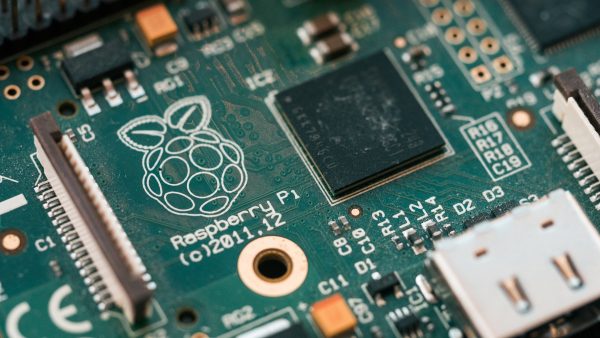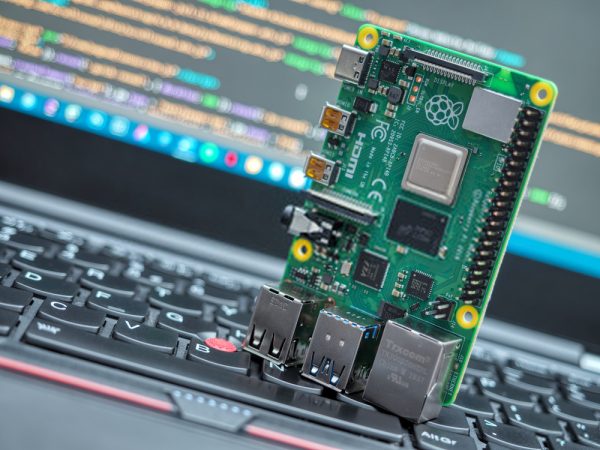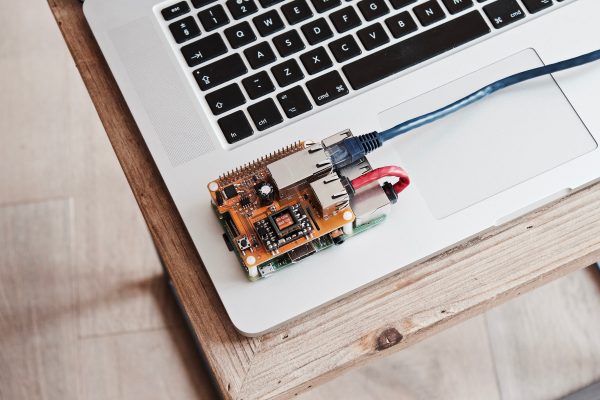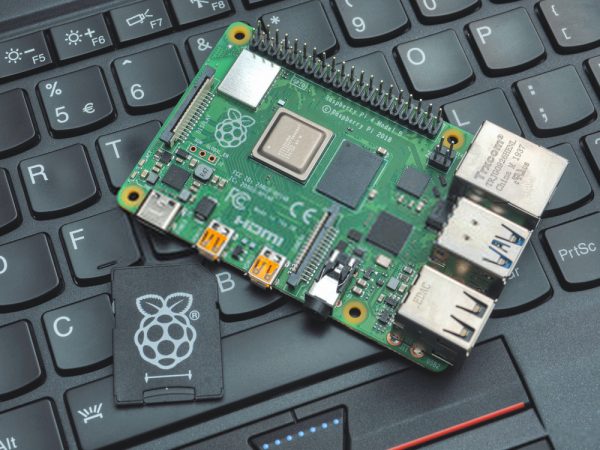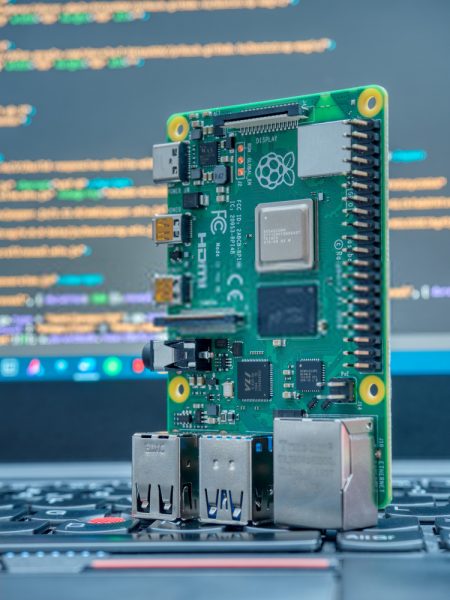What Is Raspberry Pi?
Aside from that, the Raspberry Pi also has the capacity to interact with external forces other than computers themselves. In fact, the it has been utilized in a variety of digital transformation projects, from aviaries with infrared CCTVs and weather forecasting to music equipment, and a variety of detectors.
Raspberry Pi Specifications
Similar to traditional computers, the Raspberry Pi is built on a circuit board integrated with ports and pins to allow users to control and play around with the electronic components. This is also perfect for physical computing projects and discovering more about the internet. Thus, it is an excellent platform for technology hobbyists and curious minds. If you want to know its technical specifications, check out the table below.
What Can You Do With a Raspberry Pi?
With Raspberry Pi, the possibilities are definitely endless. It is powered by Raspbian and a free operating system that you can download to start creating a diverse range of projects. Its operating system is the lightweight version of the heavy-duty Linux OS. Despite being more popular than Arduino, you can still create new projects from it, such as home automation systems, by integrating the two platforms. Although it has lesser applications, it is still an excellent platform for creating advanced programs and applications. Besides, it is an open-source platform.
Raspberry Pi Features
In a nutshell, here are some of its features and functions to give you a better idea of what you can do with Raspberry Pi:
System processing is more powerful compared to Arduino. With less than 100 MHz, Arduino can only perform limited functions. It isn’t capable of handling high-end apps. such as consoles for gaming, cloud infrastructures, and weather forecasting stations. On the contrary, Raspberry Pi’s 1 GB makes it possible to process the more advanced and high-performing systems. It is integrated with Pulse-Width Modulation (PWM) outputs for application use. Speaking of wireless capabilities, it is integrated with wireless LAN and Bluetooth functionalities. That said, you can utilize to setup and configure Wi-Fi hotspots for internet connection. Thus, the Raspberry Pi is an excellent platform for developing products and apps related to the Internet of Things (IoT). It is built with a dedicated camera port. With this, you can connect a camera without any disruption to the PI board. Hence, you can play around with CCTVs, infrared cameras, and other types of cameras. It is integrated with a dedicated port for connecting the LCD.
With an overview of what you’ll be getting out of the Raspberry Pi, you’re probably well aware by now that your it is a one-stop shop for all your project development/software development needs.
Raspberry Pi Projects
If you’d like to know some of the specific projects that you can develop with Raspberry Pi, you can get an idea from the following:
Play games without using game emulators Create a smart two-way mirror project, so you can watch the latest news while shaving in the morning. Use it as a personal computer. Stream games while using a freeware named Parsec. Develop standalone printers through the integration of AirPrint and Pi Print Server. You can have your first introduction to programming as well as learning how to write your first code. Create a Game Boy-like gaming machine or a retro-gaming device. Stream live on YouTube. Develop a Minecraft server. With Raspberry Pi’s different USB and GPIO ports, you can create a model train set. Create and control the behavior of a robot. Develop your first CCTV or setup a motion-capture security system.
These are just some of the many things you can do with it. The majority of these projects require some setup, installation, and configuration. Thus, it’s absolutely the perfect portal so you get started with computers, software development, and programming.
What Operating System Can Run on Raspberry Pi?
For all Raspberry Pi products, Linux is the main operating system. It’s because it is an open-source operating system that works between the PC’s software and hardware components. Python is its official programming language. Furthermore, It is one of the high-level and general-purpose programming languages utilized to create web apps, websites, and GUI applications. Thus, it’s one of the popular programming languages nowadays. However, the Raspberry Pi doesn’t only run Linux, providing you with maximum flexibility and technical diversity. In fact, it’s estimated that it runs more than 80 Linux-based operating systems for desktop and general use. The operating systems are installed using the NOOBS installer so they can run on the Raspberry Pi platform. Here are the best operating systems that run on the Raspberry Pi.
Android Android Things Arch Linux ARM DietPi FreeBSD FydeOS IchigoJam Kali Linux Lakka LibreELEC MotionEyeOS OpenELEC OSMC Pi Entertainment System Plan 9 Raspbian RecalBox RetroPie RISC OS Pi Ubuntu MATE Windows 10 IoT Core Windows 10 ARM Xbian
Benefits and Shortfalls of Raspberry Pi
Affordable Massive processing power in a compact circuit board Numerous interfaces Compatibility with Python and Linux Comprehensive community support
Compatibility issue with more advanced operating systems and applications Technical glitches expected with heavy apps Not ideal for big businesses with big demands
Advantages
One of the noteworthy benefits of this device is the comprehensive technical knowledge of Python and that Linux is not mandatory. Thus, you can start a new project with or without it. Its main purpose is to learn and discover the language and system through interactive projects. Its basic model is the Raspberry Pi Zero W or the Pi Zero. The Raspberry Pi Zero doesn’t have Bluetooth and Wi-Fi functionalities while the Pi Zero W has. These basic models provide users with the opportunity to learn the computer/programming language. Also, you can discover the IoT with creative and unique projects that can keep students engaged. With IoT initiatives, it comprises interrelated computing devices and technical machines with the ability to transfer data to a network or cloud. Through it, individuals can easily develop projects. Such as chatbots, retro gaming devices, speakers, detectors, weather stations, and world clocks. With each development you will accomplish, you will gain new skills and expertise. Therefore, this can improve your confidence and abilities. Aside from the unlimited opportunities for learning, Raspberry Pi provides you with comprehensive support. In addition, its official website is a one-stop platform for all your learning resources and tools. It has troubleshooting guides, videos, help guides, blogs, and forum discussions. Considering all these, it’s definitely an excellent resource for teachers, parents, and self-motivated students. In addition, the Raspberry Pi Foundation provides extensive support to all educators on the platform. With face-to-face discussions, curriculum, magazines, and online courses, they make sure that every educator has the essential tools for teaching students through the wonders of computer science and technology.
Disadvantages
Despite the many functions that you can do with the Raspberry Pi, it comes still with a number of limitations due to its hardware. Because of its main processor, it won’t work on x86 operating systems. Thus, some of the Windows and Linux computers aren’t compatible with it. Also, some applications such as Chrome, Adobe Photoshop, and Sony Vegas require a high demand for CPU processing. With that in mind, Raspberry Pi won’t work well with these kinds of apps. While you can use it as a personal computer, you can’t completely replace your traditional PC with this device. When you’re setting up new servers and computer systems, it isn’t an excellent computing device for bigger businesses and corporations. You’ll most likely encounter technical glitches since it can’t accommodate heavy apps and servers. It can’t catch up with the demands of modern apps, and some of these apps can’t run fast enough on the Raspberry Pi. Despite its disadvantages, it’s still worth it, if you are fond of creating and manipulating computing systems and devices. Also, it provides you with the flexibility and freedom to try numerous things you probably wouldn’t dare trying on your main computer.
Is It Worth Getting a Raspberry Pi?
When it comes to answering our verdict on whether it is worth getting Raspberry Pi, the answer lies in every user’s preference. We’ve all known how it provides more interactive and affordable learning in the study of computer science. As mentioned, the possibilities are endless, especially in the aspects of IoT and home automation systems. However, there are things you should know before concluding whether Raspberry Pi is worth buying or not. With its price, one thinks that it’s 100% affordable. However, little did you know; for the price of $35, it’s simply a circuit board. Thus, to make use of it, you’ll need to purchase a mouse, keyboard, HDMI, power outlets, and 3.5mm audio jack. As such, the $35 affordability is just a myth since you need to buy additional equipment. With modern technologies and digital transformation popping here and there. Most people wouldn’t prefer using it as a device replacement. It’s like going back to the ancient days of the computer. However, for its affordability and impressive performance, you can definitely purchase it especially if you already have the equipment lying around in your home. You can consider it as one of your onboarding essentials to the wonderful and diverse world of computer science and technology.
